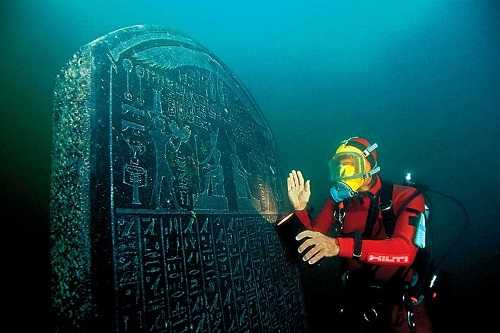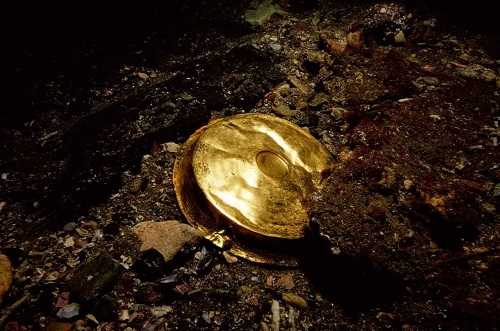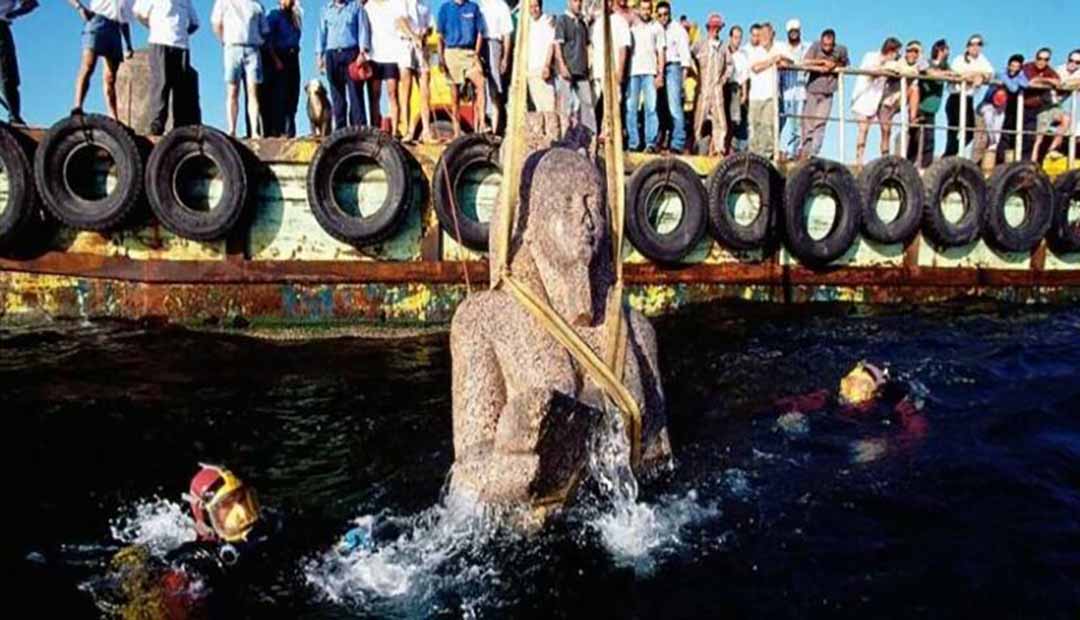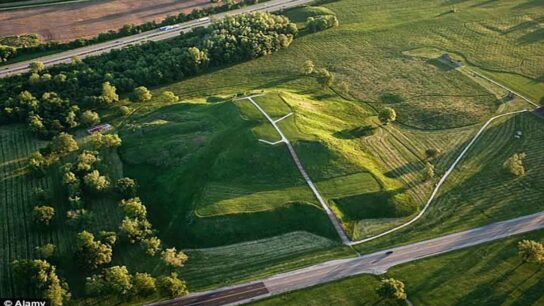Sunken City of Heracleion Found: Unveiling Egypt’s Lost Port Near Alexandria
The Sunken City of Heracleion is one of the most outstanding examples of mythology becoming a reality. For ages, the ancient Egyptian city of Heracleion remained buried in mythology. The town, visited by Paris and Helen of Troy and referenced by ancient authors such as Diodorus and Herodotus, was forgotten for over a thousand years until it was unearthed in 2000 by French archaeologist Franck Goddio.
The city of Heracleion was discovered in the western section of Abukir Bay in Alexandria in 2000. Franck Goddio and his colleagues uncovered an ancient Egyptian temple and a stele with the city’s name etched at a depth of 45 meters, 6.5 kilometers from the present coast.
Many ancient Greek thinkers knew about Heracleion, including Herodotus, who mentioned it in several of his books, yet its existence was not established until the nineteenth century. The city, also known as Thonis, belonged to the Ancient Egyptian civilization, and its prominence expanded significantly during the Pharaohs’ last days.

According to tradition, this fallen city sheltered its namesake, Heracles, and lovers Paris and Helen before fleeing to Troy. Cleopatra, Egypt’s most renowned queen, was crowned at one of the temples. It was Egypt’s principal port for foreign trade and tax collection throughout the Late Period. The infrastructure of Thonis-Heracleion was separated into more than six marine basins.
The city thrived for approximately 1500 years and occupied an area of 11 by 15 kilometers (6.8 x 9.3 miles) before sinking beneath the sea. It occurred in the eighth century AD. Divers uncovered the exceptionally well-preserved city with many of its treasures still intact, including the main temple of Amun-Gerb, giant pharaoh statues, hundreds of smaller statues of gods and goddesses, a sphinx, 64 ancient ships, 700 anchors, stone blocks with both Greek and Ancient Egyptian inscriptions, dozens of gold coins, and bronze and stone weights.
In 1933, British RAF Group Captain Cull was flying over Aboukir, an Egyptian Royal Air Force airfield east of Alexandria, when he noticed something in the water below him. Cull could see the shapes of structures beneath the river from his vantage point. Cull unknowingly discovered Heracleion, a significant ancient Egyptian city that had been submerged for about 1500 years.
There had been whispers of submerged remains for nearly a century before Cull flew over Heracleion. In 1866, Mahmoud Bey El-Falaki, the Viceroy of Egypt’s official astronomer, issued a map that pinpointed the neighboring ancient town of Canopus on the Mediterranean. However, identifying and excavating the site took approximately 70 years.
It wasn’t until 1996 that a group of Egyptian and European archaeologists led by Franck Goddio began investigating the ancient port’s undiscovered waters. It took years to find Heracleion: the crew had to start from scratch, exploring the seafloor, obtaining soil samples, and gathering geophysical data to find archaeological remnants.

A stunning black stele standing two meters high and etched with excellently preserved hieroglyphics from the early fourth century BC was one of the most unusual objects from the buried city.
The discovery of the stele was significant for archaeologists because it helped solve a great mystery: by comparing it to other inscribed monuments, experts were able to determine that Thonis and Heracleion were not two separate towns, as previously thought, but rather one single city known by both its Egyptian and Greek names.
Heracleion, Menouthis, and certain remnants of Canopus were once located in Abu Qir Bay but are now submerged at a depth of roughly 10 meters. The writings of the historians Herodotus and Strabo support this, but their position was lost after Alexander the Great established Alexandria as Greece’s primary port.
According to the ancient chroniclers, a massive temple was devoted to the deity Serapis in Canopus. According to mythology, the earliest Christians demolished this temple in the fourth century. In its place, a monastery was built to commemorate the martyrdom of several saints.
Archaeologists think a succession of earthquakes destroyed the ancient island. Scientists also do not rule out the potential that an earthquake, followed by a tsunami or all of these events, caused towns to sink into the sea. No artifacts older than the second part of the eighth century have been recovered from the sea.




